The Conference May Be Over
….but the conversation is just starting
We wrapped up day 3 of Keeping History Above Water with a closing roundtable, appropriately entitled, “What Have We Learned and Where Do We Go from Here?”
Cornelia Dean, veteran science writer/editor for t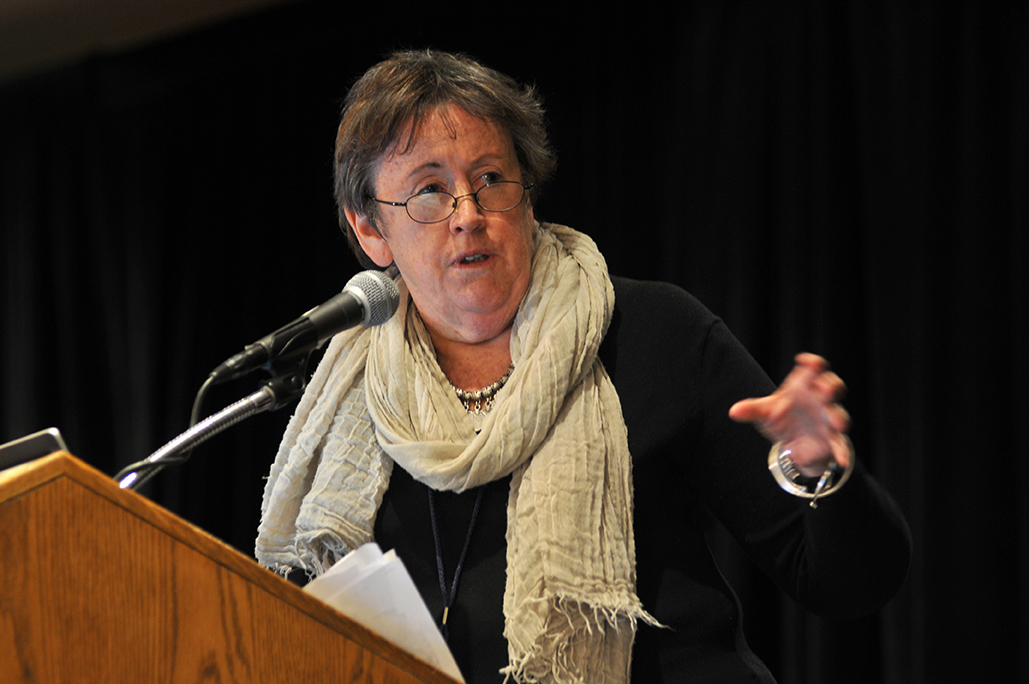 he New York Times (1997-2003) and writer-in-residence at Brown University, served as session chair and moderator for a candid, often challenging discussion. Joining Dean were panelists (click images below to enlarge) Adam Markham, Deputy Director of Climate and Energy for the Union of Concerned Scientists; John Englander, oceanographer, consultant, author, and sea level rise expert; Grover Fugate, Executive Director of the RI Coastal Resources Management Council; Jim Lindberg, Senior Director of the National Trust for Historic Preservation’s Preservation Green Lab; and Victoria Hermmann, US Director for the Arctic Institute.
he New York Times (1997-2003) and writer-in-residence at Brown University, served as session chair and moderator for a candid, often challenging discussion. Joining Dean were panelists (click images below to enlarge) Adam Markham, Deputy Director of Climate and Energy for the Union of Concerned Scientists; John Englander, oceanographer, consultant, author, and sea level rise expert; Grover Fugate, Executive Director of the RI Coastal Resources Management Council; Jim Lindberg, Senior Director of the National Trust for Historic Preservation’s Preservation Green Lab; and Victoria Hermmann, US Director for the Arctic Institute.
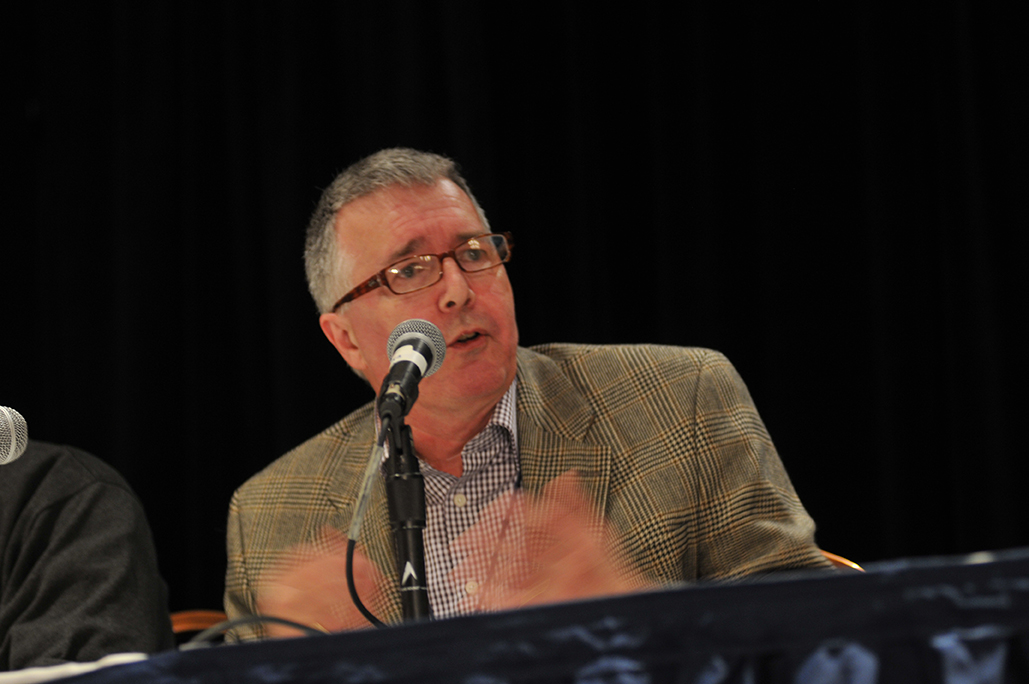
Adam Markham, Deputy Director of Climate and Energy for the Union of Concerned Scientists
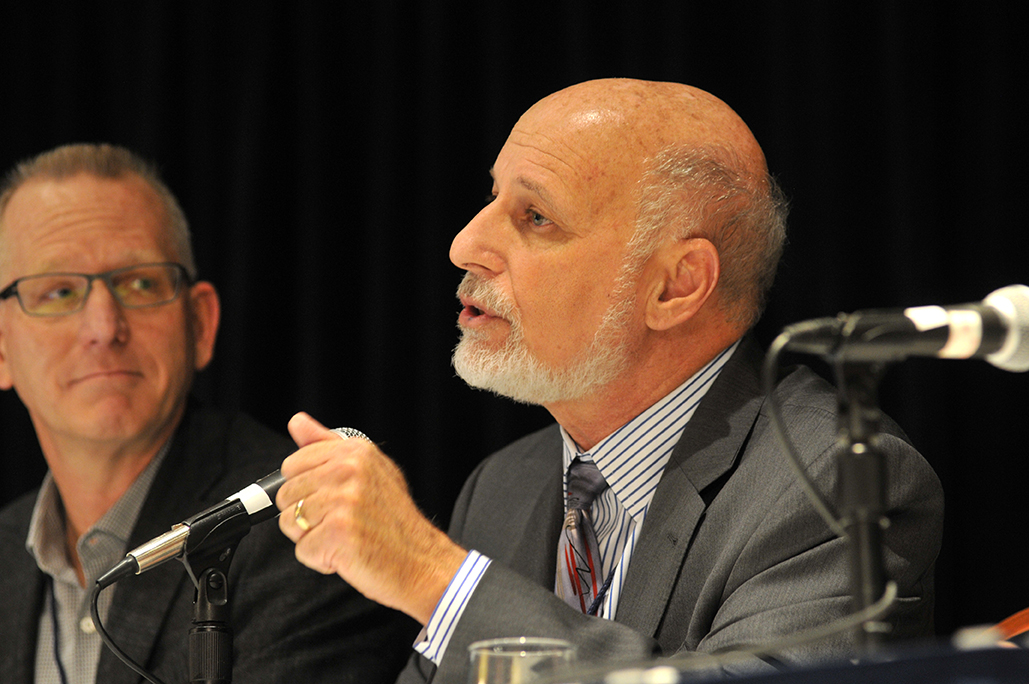
John Englander, oceanographer, consultant, author, and sea level rise expert
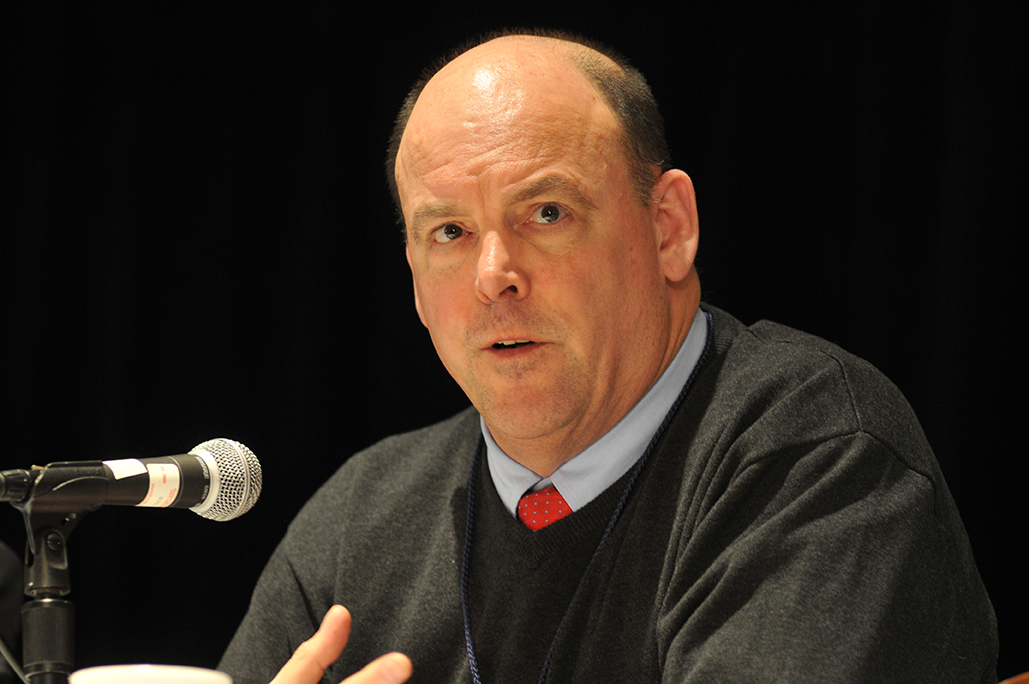
Grover Fugate, Executive Director of the RI Coastal Resources Management Council
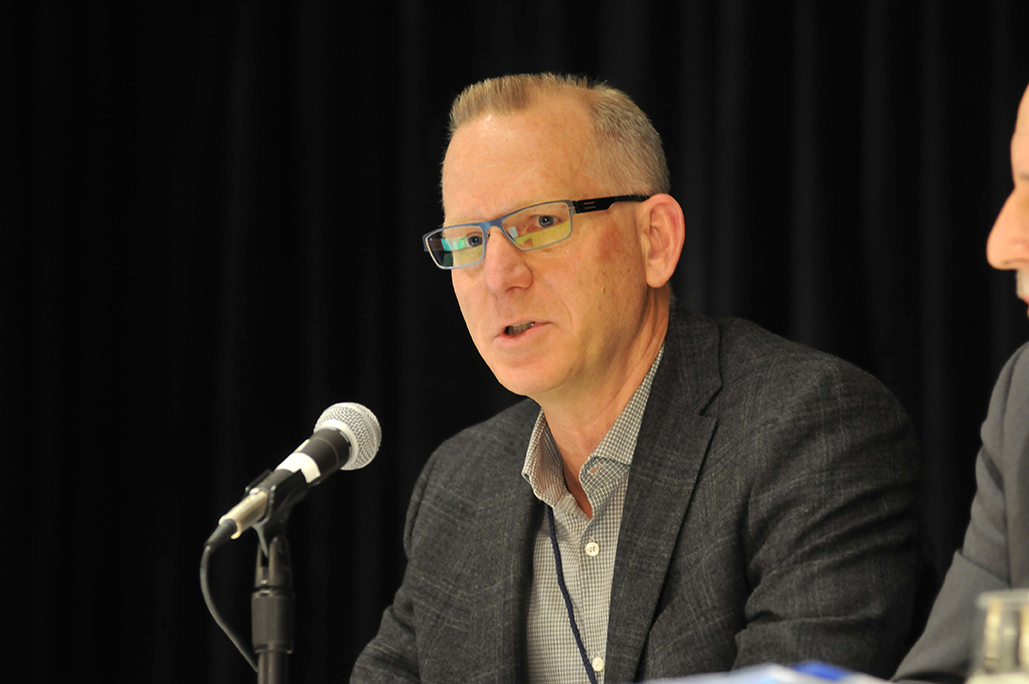
Jim Lindberg, Senior Director of the National Trust for Historic Preservation’s Preservation Green Lab
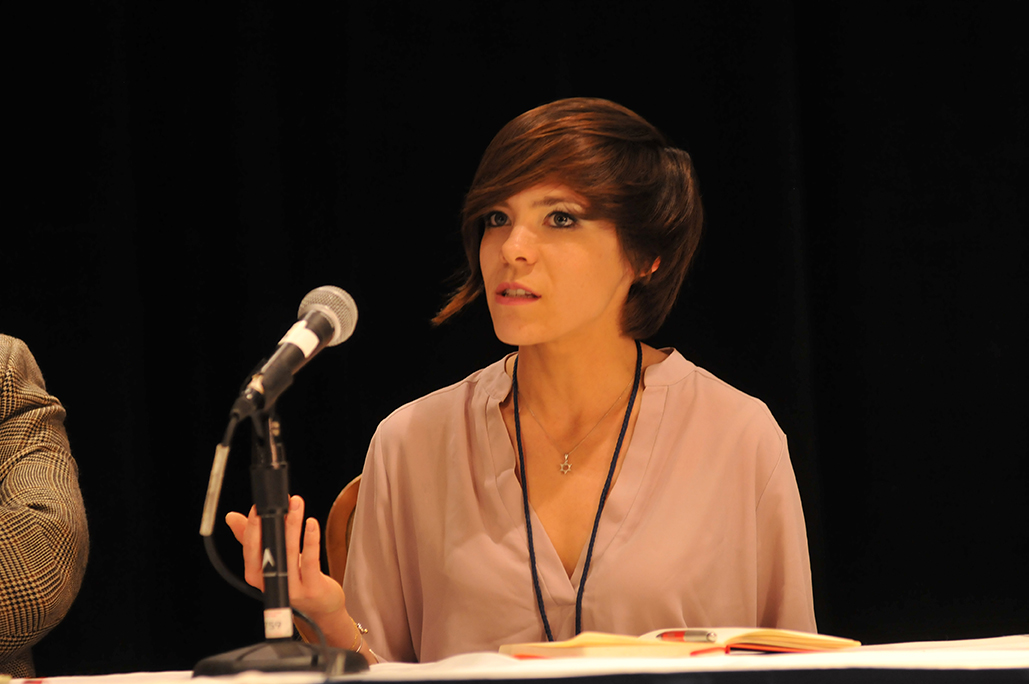
Victoria Hermmann, US Director for the Arctic Institute
So what did we learn and where do we go from here? These are arguably the most important questions for keeping the productive conversations of the last three days going. What follows is an attempt to capture the substance and spirit of the answers, offered by both panelists and audience, during this wide ranging summary discussion.
1. Water is apolitical.
“The ocean doesn’t care what the laws are, it’s going to rise anyway,” said Englander. This was a theme that was echoed throughout this roundtable, and indeed throughout the entire conference. (“Unfortunately the Law of Thermal Expansion is one we can’t filibuster,” said Sen. Sheldon Whitehouse during his opening remarks. “Ice melts at 32 degrees. It doesn’t care whether you are Republican or Democrat,” added Lisa Craig, Chief of Historic Preservation for the City of Annapolis, in a later session.) It’s a poignant one, and not just in terms of political intransigence on climate change issues. Even where there is leadership and political will, large institutions are not agile enough for political processes alone to solve these problems. As Englander reminded us, “The Paris Agreement can’t stop sea level rise.”
2. It takes a village to raise a village…
The need for community engagement was another theme that was repeated throughout the conference. Queen Quet, Chieftess of the Gullah/Geechee Nation of South Carolina, dedicated an entire workshop to the topic, warning of a “tyranny of experts” that can develop when top-down approaches don’t leave room for community input. Victoria Herrmann expressed similar sentiments in the closing panel. While we have high level conversations about future threats, she noted that many indigenous communities are already dealing with them – and that we can learn a lot from their experiences if we only stop and listen. “We need to be more inclusive,” she emphasized. “We can apply their approaches within their own communities to new and emerging geographies.”
3. …But we need to think bigger than villages.
While bottom-up community engagement should be a priority, there was also wide agreement that current efforts are too fragmented to approach the problem at scale. “In the US land is run at a local level by people and commissions who are the least resourced to deal with these issues,” Grover Fugate lamented. Cornelia Dean recalled a conversation with a coastal geologist who told her, “We are attempting to regulate the coast one parcel at a time, which does not have good long-term odds for success.” Fugate attributed this to a lack of large-scale institutional leadership. “We have major issues and no major governing body that has any kind of grip on the challenges ahead. It’s a collision driven by an economic engine that does not want to know what’s around the bend.”
4. If you want urgency, speed up the clock.
Conversations around climate change, sea level rise, and historic and cultural preservation tend to look at long timelines. While that may suffice in high level policy discussions, it does little to get the general public engaged with any sense of urgency. “We need shorter time frames so that people can relate to it,” said Grover Fugate. Englander and Dean noted that framing sea level rise in terms of the life of a mortgage has often helped them convey the urgency of the threat. As if to punctuate that point, Markham added, “We had time to prepare one mortgage ago.”
5. Learn from the Dutch.
In the 1980s, the Dutch built a series a flood protection barriers meant to withstand sea level rise that was unthinkable at the time – and they’re already wishing they had built them higher. “The Dutch have been reclaiming land from the ocean for 1,000 years,” John Englander pointed out. “We don’t have that culture here.” The nature of the threat is such that even our substantive conversations aren’t grappling with its full magnitude. As Grover Fugate succinctly illustrated, “Some structures are designed to withstand a storm, but the shoreline is no longer there.” He explained that our approach to flood insurance, for example, is based not on future projections, but past events. “That’s like trying to drive down Route 95 with your rear view mirror.”
6. We’re going to have to make hard choices.
“We had time to prepare 30 years ago when we said this might happen. Now we’re here,” Markham stated. “We’re not ready for something that is already happening. We’re already having to make choices.” Those choices may require sacrifice. “Some buildings are not savable in their current locations,” Englander admitted. “They need to be moved, raised, or allowed to fall into ocean.” Hermmann added, “We need a national conversation about relocation and adaptation framework.”
7. But it’s not too late and hope is not lost.
One of the reasons we convened Keeping History Above Water was not only to bring together many voices and ideas, but to give them momentum beyond our four-day event. “Focusing on solutions and strategies has been a positive turn in the conversation that has happened here at the conference,” noted Jim Lindberg. “Out in the world, the more we can talk about action and things we can work on together, the better.” Perhaps Grover Fugate best summed up the work that lies ahead: “We need to unleash our ingenuity on this problem and design our way out of it.”
Post written by John Taraborelli
Photos courtesy Frank Mullin
 he New York Times (1997-2003) and writer-in-residence at Brown University, served as session chair and moderator for a candid, often challenging discussion. Joining Dean were panelists (click images below to enlarge) Adam Markham, Deputy Director of Climate and Energy for the Union of Concerned Scientists; John Englander, oceanographer, consultant, author, and sea level rise expert; Grover Fugate, Executive Director of the RI Coastal Resources Management Council; Jim Lindberg, Senior Director of the National Trust for Historic Preservation’s Preservation Green Lab; and Victoria Hermmann, US Director for the Arctic Institute.
he New York Times (1997-2003) and writer-in-residence at Brown University, served as session chair and moderator for a candid, often challenging discussion. Joining Dean were panelists (click images below to enlarge) Adam Markham, Deputy Director of Climate and Energy for the Union of Concerned Scientists; John Englander, oceanographer, consultant, author, and sea level rise expert; Grover Fugate, Executive Director of the RI Coastal Resources Management Council; Jim Lindberg, Senior Director of the National Trust for Historic Preservation’s Preservation Green Lab; and Victoria Hermmann, US Director for the Arctic Institute.





